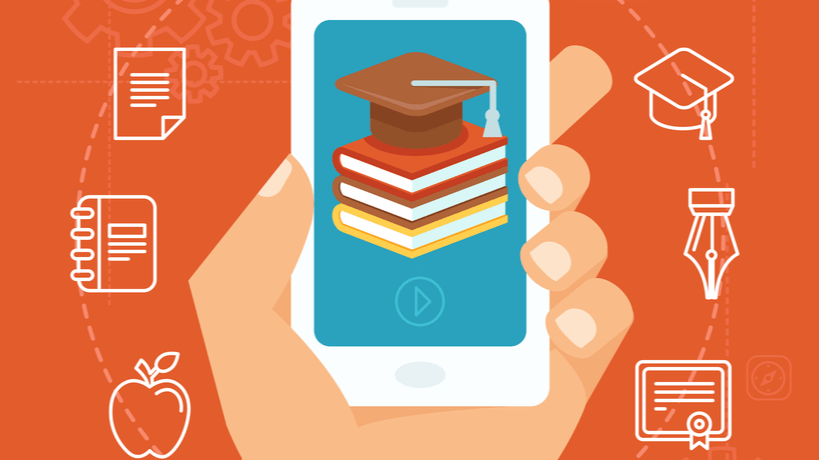How To Make Your Mobile Learning Engaging
Mobile learning (mLearning) is learning content consumed on any mobile device, primarily tablets and smartphones. mLearning is becoming increasingly popular and, despite what many people may assume, learning content for mobile devices cannot always be simply a smaller version of a course designed for the desktop environment.How content needs to be designed will depend largely on the screen space available. If both tablets and smartphones are being targeted, then designing with the smaller screen size in mind will make your content more usable for your learners.When creating mobile learning, many of the key considerations for designing all learning will apply:
- You’ll need to know your audience – who the learners are, and what motivates them.
- You’ll need to have a clear idea of what they need to learn – what the learning objectives are, and what the skill/knowledge gap is that you’re aiming to fill.
- You’ll need to know the usage scenarios – how they are likely to use the learning, which device types they may be using and whether it's secheduled learning activities, just-in-time learning, refresher activities etc. or maybe a combination.
Your design and content choices will be heavily affected by the answers to these.There are other considerations, however, that are particularly relevant for designing for mobile devices. Here we’ll look at our top tips to make mobile learning engaging for your audience – the key challenge in the design of any mLearning content.
6 Top Tips To Make Mobile Learning Engaging For Your Audience
- Small chunks
Nobody wants to be scrolling through endless pages on their mobile device. Keep the page length short.Smartphone users are unlikely to want to spend long at a time working their way through your content, so make the learning nuggets short and to the point, enabling learners to complete them quickly, and easily consume what’s useful to them. Users can of course complete multiple modules in one sitting if they choose to. - Variety
Like all learning, mLearning courses need to be well designed, interesting, engaging, and relevant to the learner. Mobile devices offer the learner many competing distractions, so maintaining the learner’s focus is one of the biggest challenges when designing any mLearning.A variety of interaction types used at various points in the content can help with this, although smartphones may well limit the interaction types depending on the system architecture and screen size. For example, audio, video, quizzes, text or images could be made to work well on a smartphone. On a tablet, interactions such as drag and drop exercises, interactive text, or flip tiles could add to the user’s involvement.Limit the amount of text input from the learner or simply avoid it altogether. The keyboard on a mobile device typically reduces the screen space available, and is laborious for inputting text. - Keep it to a minimum
To engage the learner, content should be useful, relevant and presented in a way that motivates them to learn the material.As always, learners will want to be able to find relevant information both quickly and easily. However on a mobile device, this perceived need to access “what you want, when you want it” is further heightened than when using a desktop computer.Ensure that only key content is included, as on a smaller screen any supporting text can soon be seen as superfluous. Instead consider suitable images or graphics that can replace text, helping to make information more consumable on a small mobile device.Remember, there is considerably more to maximising the available screen real-estate than simply cramming content into the far corners. - Emotional engagement
You can improve engagement with your content by engendering emotional involvement with your mLearning content. Try to make it personal to the learner in some way, this way they’ll feel more of a commitment to completing the module. For example, gamification elements such as achieving an award for each module, or mLearning through gaming, could add to the emotional involvement that your learners feel for the training. Or using contexts, characters and scenarios which your learner will identify with will help draw them in and sustain interest. It may sound strange for a piece of learning, but sometimes a little dramatic tension can transform a scenario based piece of learning into something learners will be genuinely interested in completing! - Make use of the operating system
Think about making use of the device’s operating system and features for the devices you’re designing for. Can you make good use of the camera, microphone, GPS or any other features? If so, these should be carefully designed in the training, not simply gimmicks to use just because they are there. For example, could your learning be genuinely improved by varying what is shown dependent on the learner’s GPS location, or is that an unnecessary complication? - Social networking
Can you incorporate a social aspect into your course? The millennial generation are used to social networking, sharing, and collaborative learning. Would it be appropriate to make good use of any of these in your training? Perhaps allow learners to compete against each other or work through the content with their friends? Again, these would need to be well thought out, not included simply because it is possible.
Summary
There are many different ways in which to make mLearning engaging. By keeping these in mind when designing your mLearning content, you can help to provide a stimulating learner experience.
The ones we’ve touched on here are:
- Dividing content into small, manageable chunks
- Using a variety of interaction types
- Keeping content to a minimum
- Engaging learners on an emotional level
- Taking advantage of features of the operating system
- Including social networking aspects
What other ideas have you found that work well to engage learners in an mLearning environment?









